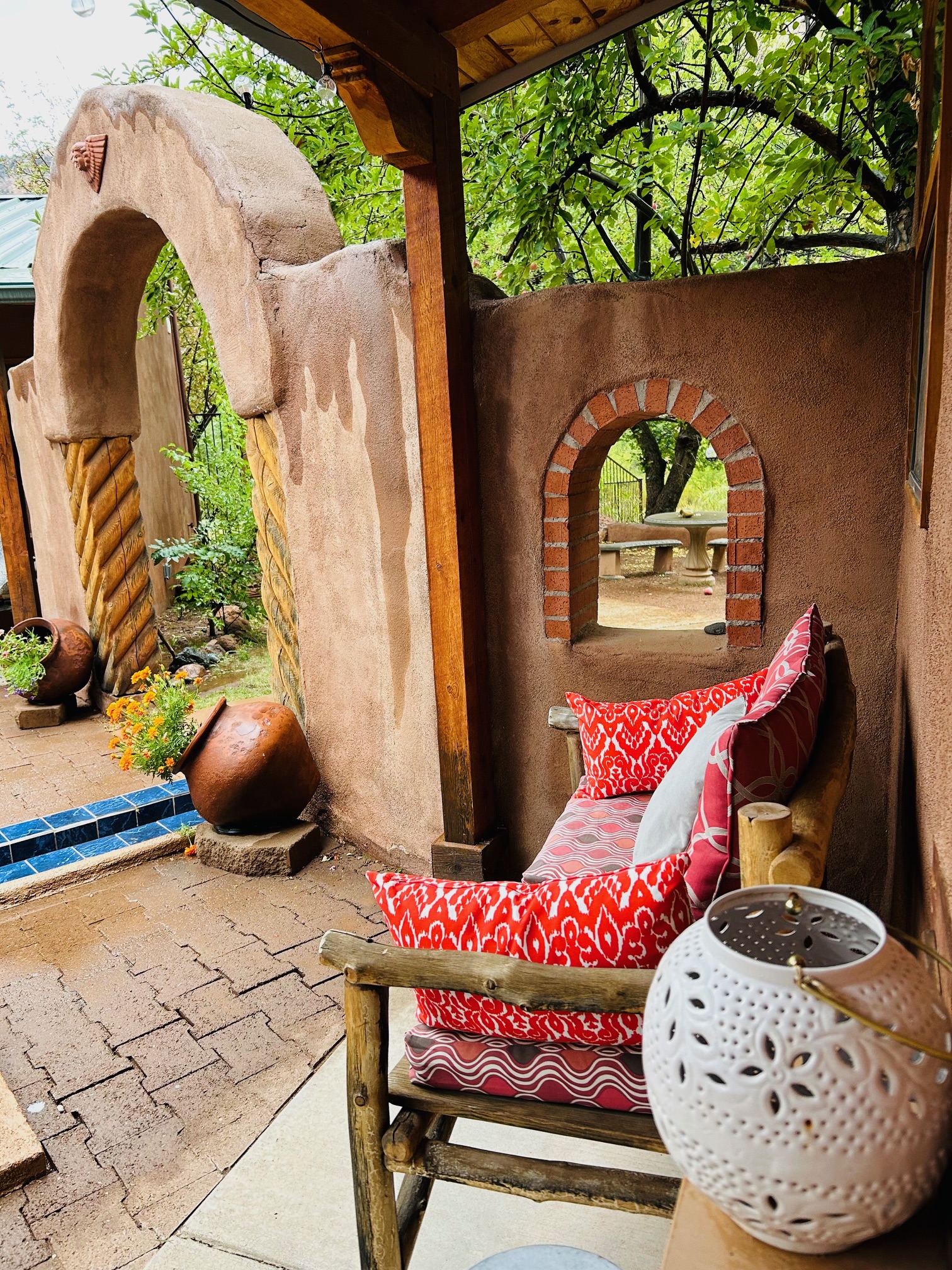
The Art of Balance: Functioning Vs. Performing
Last week, I was sitting in my therapy room with a client who spoke candidly about their habit of over-functioning and their understood lack of performing. I was reminded that in today’s fast-paced world, it’s easy to blur the line between functioning and performing – and I have often fallen into the whole of functioning while convincing myself I was performing. While these concepts are often used interchangeably, understanding their distinction can make a profound difference in how we approach our personal and professional lives – Otherwise known as The Art of Balance.
Functioning is the baseline of existence. It’s about doing what is necessary to get through the day. When we’re functioning, we’re meeting the bare minimum requirements of life. We’re attending meetings, responding to emails, and fulfilling basic responsibilities. Functioning keeps the engine running but often lacks intention, creativity, and a sense of purpose.
Signs you’re functioning:
- You’re checking tasks off a list but feeling emotionally or mentally drained.
- There’s a focus on avoiding mistakes rather than achieving excellence.
- Life feels like a series of obligations rather than opportunities.
Functioning often occurs during periods of stress or burnout. It’s a mode we slip into when resources—whether time, energy, or emotional capacity—are stretched thin. While functioning is necessary at times, staying in this mode for too long can lead to stagnation.
Performing, on the other hand, is about bringing intention, skill, and excellence to what we do. When we’re performing, we’re not just surviving—we’re thriving. Performing involves a sense of engagement and purpose. It’s about showing up fully, using our talents, and striving for our best.
Signs you’re performing:
- You approach tasks with creativity and enthusiasm.
- There’s a focus on growth and learning rather than just completion.
- You feel fulfilled and energized by your efforts.
Performing requires us to be present and invested. It often involves stepping out of our comfort zone and taking risks. Unlike functioning, performing is inherently sustainable because it’s rooted in passion and intentionality.
It’s important to note that functioning isn’t inherently negative. In fact, it’s a necessary part of life. We can’t always perform at our peak, and there are times when functioning is all we can manage—and that’s okay.
The key is to recognize when you’re stuck in functioning mode and intentionally shift toward performing when the opportunity arises. This might involve:
- Reflection: Taking time to assess your current state. Are you operating out of obligation or inspiration?
- Rest: Performance requires energy. Prioritize rest and self-care to recharge your creative and emotional reserves.
- Goal Setting: Set clear and meaningful goals that align with your values and passions.
- Support: Surround yourself with people who encourage and inspire you to perform at your best.
The journey from functioning to performing is not about perfection – it’s about progress. Both modes have their place, but living a fulfilled life often requires us to aim beyond just getting by. By cultivating awareness and intentionality, we can move from surviving to thriving, bringing our best selves to the world.
Learn More
The Holiness of No – A Practice in Self-Care
I was reminded this past week of a time I never said No – No to attending a meeting, No to attending a conference, No to rearranging my schedule and my own needs to fit the needs of another. This inability to say No had an great impact on me, and not the way I desired – It changed the way others invited me in; It altered the way I operated in my day-t0-day life; It had a profound effect on my physical, mental, and spiritual self. Saying No, felt like I was letting others down and ironically, by not saying No I was indeed letting others down, not to mention myself.
In a world that often equates busyness with success and self-sacrifice with virtue, saying No can feel uncomfortable, even selfish. Yet, learning to say No is not only an act of self-care, but also a spiritual practice—a way of honoring the sacred boundaries that God has woven into who we are.
From the very beginning, God modeled the holiness of limits and boundaries. In Genesis, we read of God creating the world in six days and resting on the seventh. That day of rest—that divine No to more work—was not an afterthought, but an integral part of creation itself. It set a rhythm, reminding us that we are not meant to be endlessly productive, but to live in balance and harmony.
Saying No can be an act of trust. When we decline an invitation, step back from an obligation, or pause a project, we are trusting that we do not need to be involved in every detail. We release the illusion of control and acknowledge that the world’s weight is not ours to bear alone.
Consider this: When we say “no” to something, what are we saying Yes to?
This practice is particularly vital for those in caregiving roles—parents, clergy, teachers, therapist, and anyone whose work centers on serving others. The constant demand to give can drain us to the point of compassion fatigue and burnout if we are not careful. By saying No, we create space to rest, recharge, and reconnect. In doing so, we ensure that our Yes comes from a place of abundance rather than depletion.
When we say No to overcommitment, we are saying Yes to meaningful relationships—to the quality time with family and friends that restores our very souls. When we say No to perfectionism, we are saying Yes to grace—to accepting ourselves as God’s beloved, sometimes messy, and always cherished. When we say No to constant busyness, we are saying Yes to rest—to honoring our bodies and spirits as the very pouring out to others of the Holy Spirit.
Of course, saying No isn’t easy. It requires discernment, courage, and support. We may fear disappointing others, missing opportunities, or being seen as less committed. When we frame our No as an affirmation for balance, it becomes a powerful witness. It says, “I trust in timing and provision. I honor the limits of my humanity. I choose to serve from a place of wholeness, not exhaustion.”
What might it look like for you to embrace the holiness of No in your own life? Perhaps it’s declining an extra responsibility at work, setting boundaries around your time, or saying No to the inner critic that demands perfection. Whatever it is, remember that your No is not a rejection but a redirection—an intentional choice to live fully, freely, and faithfully.
In saying No, we open ourselves to Yes to rest – Yes to renewal – Yes to us!
May we all have the wisdom and courage to embrace this sacred practice.
Learn More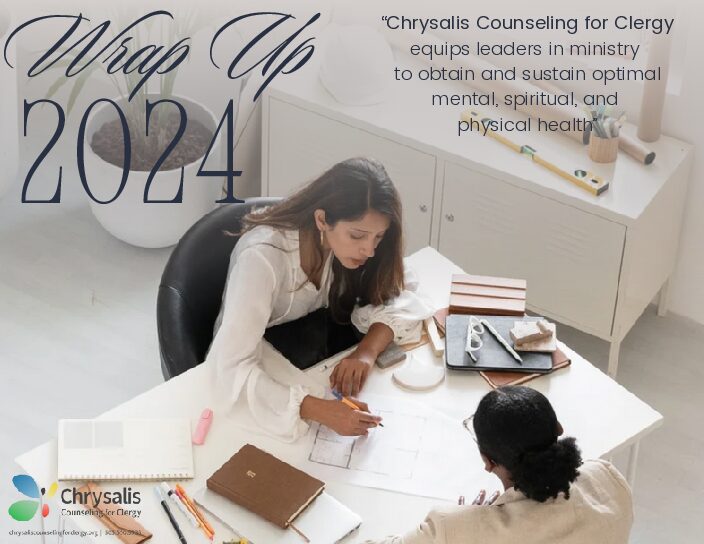
It’s a Wrap! Year-End Review
As we close out another impactful year, it’s incredible to see how far Chrysalis has come since its inception in 2019. What started as a vision during my Doctor of Ministry (DMIN) project has grown into a thriving ministry that continues to make a difference in the lives of clergy across the United States.
Rolling Numbers Update
Since the first retreat in April 2019, Chrysalis has served:
- 162 individual clergy members through 15 Rest & Renewal Retreats:
- 2 retreats in 2019
- 1 retreat in 2020
- 2 retreats in 2021
- 2 retreats in 2022
- 3 retreats in 2023
- 5 retreats in 2024!
- 59 tele-mental health clients
- 32 clergy through three Covenant Group cycles
- 92 mental health therapists with continuing education units (CEUs/CUs)
- Launched a weekly Constant Contact point of connection with over 500 subscribers!
These numbers are more than statistics; they represent lives renewed, ministries revitalized, and communities strengthened.
Looking Ahead to 2025
We are entering 2025 with incredible momentum and anticipation for what lies ahead. Here are some exciting updates:
- 20 participants registered for our annual Cruise Retreat in January
- 9 new covenant members ready to embark on their journey towards mental health
- April Jemez Springs, NM retreat already at full capacity!
- 2 new retreats planned for Fall 2025
Goals for 2025
We remain committed to expanding programming and opportunities for clergy across the United States. With your support, we aim to:
- Continue to offer scholarships for all programming areas, including retreats, telehealth services, and CEU/CUs
- Introduce new initiatives to serve clergy in innovative and impactful ways
- Continue providing a safe and nurturing space for rest, renewal, and growth
Your Support Makes It All Possible
None of this would be possible without the generosity and partnership of people like you. As we reflect on 2024, we are deeply grateful for every prayer, contribution, and word of encouragement. You are an essential part of this journey, and with your help, we will continue to sustain and expand this vital ministry. Please follow the prompts on our website – Listed under the Solutions page/bottom of page (https://chrysaliscounselingforclergy.org) where you can pay directly with your credit card – and recurring if you wish – or, you are welcome to send a check in the mail if that is easier for you (808 Manzano St, NE Albuquerque, NM 87110).
Thank you for believing in the mission of Chrysalis “To provide holistic programs which equip leaders in ministry to obtain and sustain optimal mental, spiritual, and physical health”
and for walking alongside us as we serve those who serve others.
Here’s to a bright and hopeful 2025!
Learn More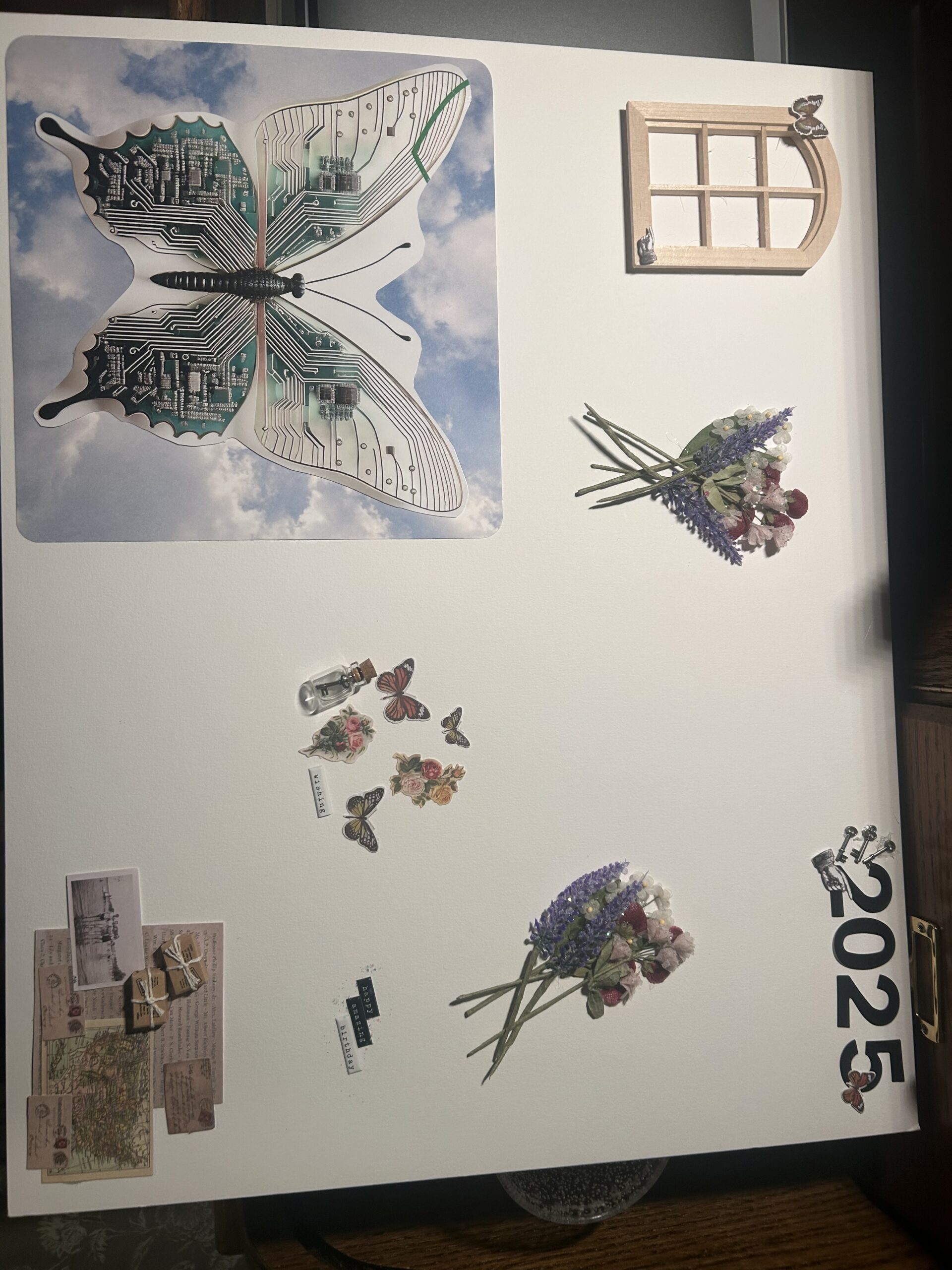
What’s My Vision?
For the past three years, just as the year is ending a new year is on the horizon, my daughter and I have made a trip to the local craft store where we purchase a generous amount of miscellaneous supplies including stickers, markers, poster board, and decorative paper. Before returning to the house, we pick-up Starbucks and some snacks as we prepare to set the stage appropriately for our annual Vision Board extravaganza – including reflection time with our current Vision Boards and intention setting for our newest creations!
I find this process and time with my daughter to be a highlight of the year. Not only am I given a privileged view into my daughter’s dreams and aspirations for the year, I too am able to set an intention for my own dreams and aspirations for what is to come. I am always struck with the final product, and I am always taken back a bit during the vision board re-cap at the end of the year – a time I find so very telling!
As the New Year approaches, the air is filled with anticipation, reflection, and, for many, the hope of a fresh start. This season invites us to set resolutions, dream big, and visualize what’s to come. But let’s face it: New Year’s resolutions can often feel like a daunting laundry list—a mix of ambition and obligation that quickly becomes overwhelming. Enter vision boarding, a creative and inspiring way to approach the New Year.
I forgo the creation and concept of setting resolutions many years ago. For me, resolutions are often tied to specific, measurable goals—like losing 20 pounds, writing a book, or saving a certain amount of money. While these goals are commendable, they can feel rigid, and the pressure to meet them can lead to frustration if life takes an unexpected turn – as it so often does!
Vision boarding, on the other hand, is about dreaming without constraints. It allows us to tap into our creativity and align our aspirations with our values and passions. Think of it as giving yourself permission to explore the unencumbered side of your imagination.
In case you are not familiar with what a Vision Board is, it’s simple: A vision board is a collage of images, words, and symbols that represent your goals, dreams, and intentions. It’s less about creating a to-do list and more about visualizing the essence of what you want to experience in the coming year. Your board might include pictures of a dream vacation, words like courage or balance, or images that evoke a sense of joy and possibility. It’s your personal treasure map, crafted with creativity and anticipation.
A few tips on how to create a Vision Board:
- Set the Stage: Carve out time to reflect on what you want in the New Year. Light a candle, play your favorite music, or sit in silence for a bit.
- Gather Supplies: You’ll need a board (poster board, corkboard, etc); magazines; printed images; scissors; glue; and markers.
- Dream Freely: Think about different areas of your life—relationships, career, health, spirituality, adventure. Let your mind wander, and don’t be afraid to include unencumbered dreams that feel big and unconventional.
- Select and Assemble: Cut out images and words that resonate with you, and arrange them on your board. There’s no right or wrong way to do this—just let your intuition guide you. As you create your vision board, embrace your playful and adventurous spirit. What dreams do you want to chase? What goals could you tackle with strength? And what obstacles might you overcome with resilience? Allow your imagination to lead the way, and don’t shy away from dreams that seem wild or audacious.
- Place It Somewhere Visible: Your vision board is a living, breathing reminder of your goals and dreams. Put it somewhere you’ll see it regularly, whether that’s in your bedroom, office, or even your closet. Studies show that visualization can have a powerful impact on achieving goals. When we see something clearly in our minds, it activates our brain’s neural pathways, making the goal feel more tangible and achievable. Vision boards work because they remind us of what matters most, even on the days when life feels messy and complicated.
The beauty of vision boarding is that it shifts the focus from perfection to possibility. Instead of worrying about sticking to rigid resolutions, you’re invited to explore, dream, and co-create with the universe. So grab your scissors, your glue, and a stack of magazines. Let’s make this New Year a year of bold visions and boundless joy!
Learn More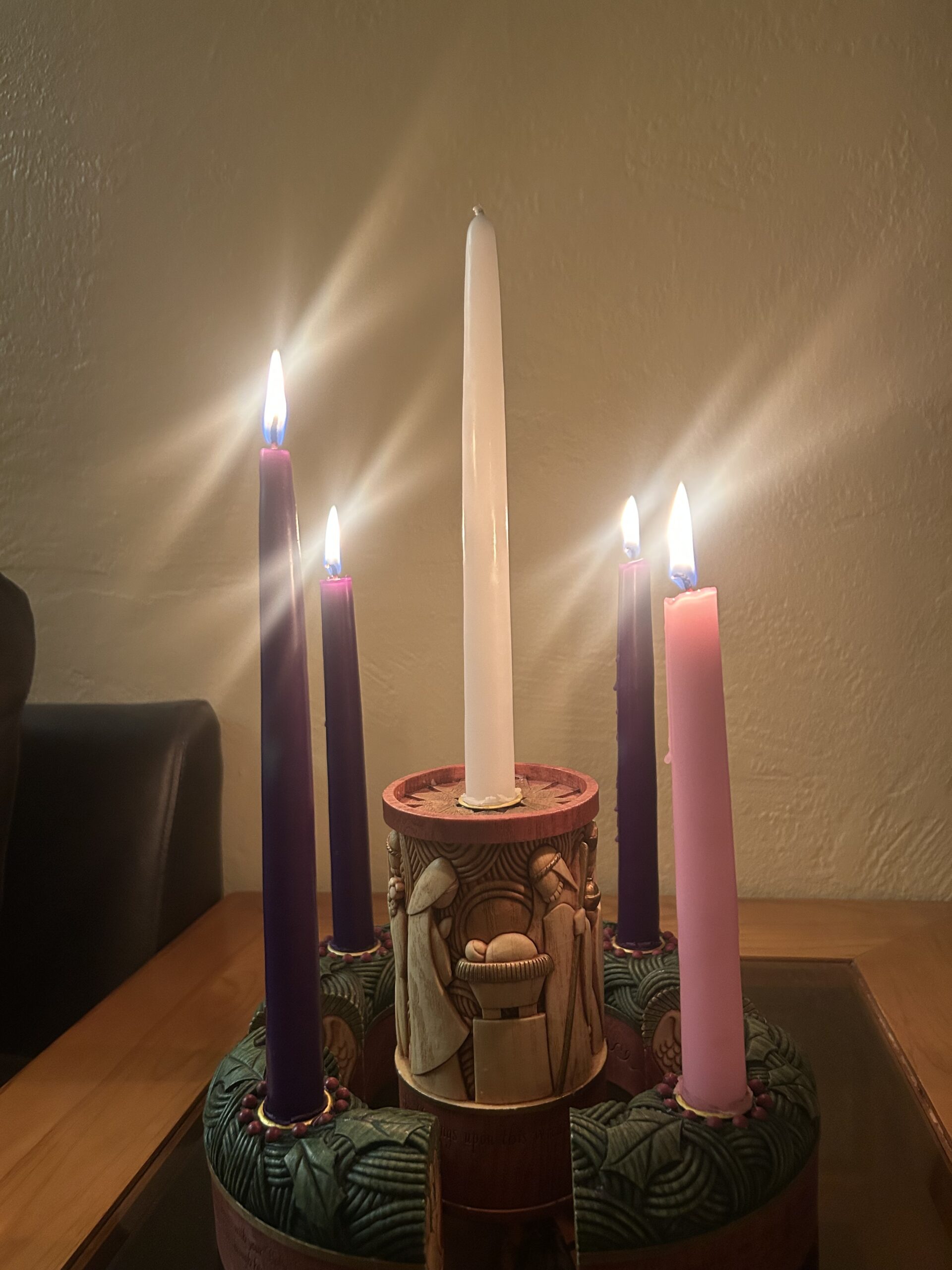
Emmanuel: “God With Us”
The Fourth Sunday of Advent is a time of profound reflection and anticipation. As we light the fourth candle, our hearts turn to Mary and Elizabeth—two women bound by shared experiences, mutual encouragement, and a deep awareness of God’s presence. Their story, found in Luke 1:39-56, reminds us of the importance of knowing we are not alone, even in the most challenging seasons of life.
Mary’s journey to Elizabeth’s home is much more than a visit; it is an act of seeking and being found. After the angel Gabriel’s startling announcement, Mary carries not only the physical weight of a child but also the emotional and spiritual burden of her unique calling. Imagine the questions swirling in her heart: “What will this mean for my future?” “How will others understand?” “Am I truly ready for this?”
Elizabeth, too, is living a miraculous story. She has conceived in her old age, a sign of God’s faithfulness and a fulfillment of long-forgotten hopes. When Mary arrives, Elizabeth’s joyous greeting, “Blessed are you among women, and blessed is the fruit of your womb!” transforms Mary’s uncertainty into affirmation. In that sacred moment, Mary knows she is not alone.
This encounter between Mary and Elizabeth is a powerful example of Emmanuel—“God with us.” It is a reminder that God’s presence often comes through the people God places in our lives. Mary finds solace and strength in Elizabeth’s understanding embrace. Elizabeth’s words of blessing remind Mary of God’s promises, and Mary responds with her Magnificat, a hymn of praise that declares God’s faithfulness across generations.
In this Advent season, the story of Mary and Elizabeth calls us to reflect on the relationships that remind us of God’s presence. Who are the Elizabeths in your life—those who encourage, affirm, and remind you that you are not alone? Likewise, how can you be an Elizabeth for someone else, offering the gift of presence and encouragement?
Advent is a time of waiting, and waiting can often feel isolating. But the story of Mary and Elizabeth reminds us that we are never truly alone. God’s presence is made real through the community we build and the love we share. This truth is embodied in the name Emmanuel, “God with us.”
As we prepare for the celebration of Christ’s birth, may we hold fast to this promise. May we find joy in the connections that sustain us, and may we be inspired to reach out to others who need to know they are not alone. For in the face of every challenge and in the midst of every journey, God is with us—through the love of others, the blessings we give and receive, and the hope that fills our hearts this Advent season.
Blessings to each of you during this season!
Learn More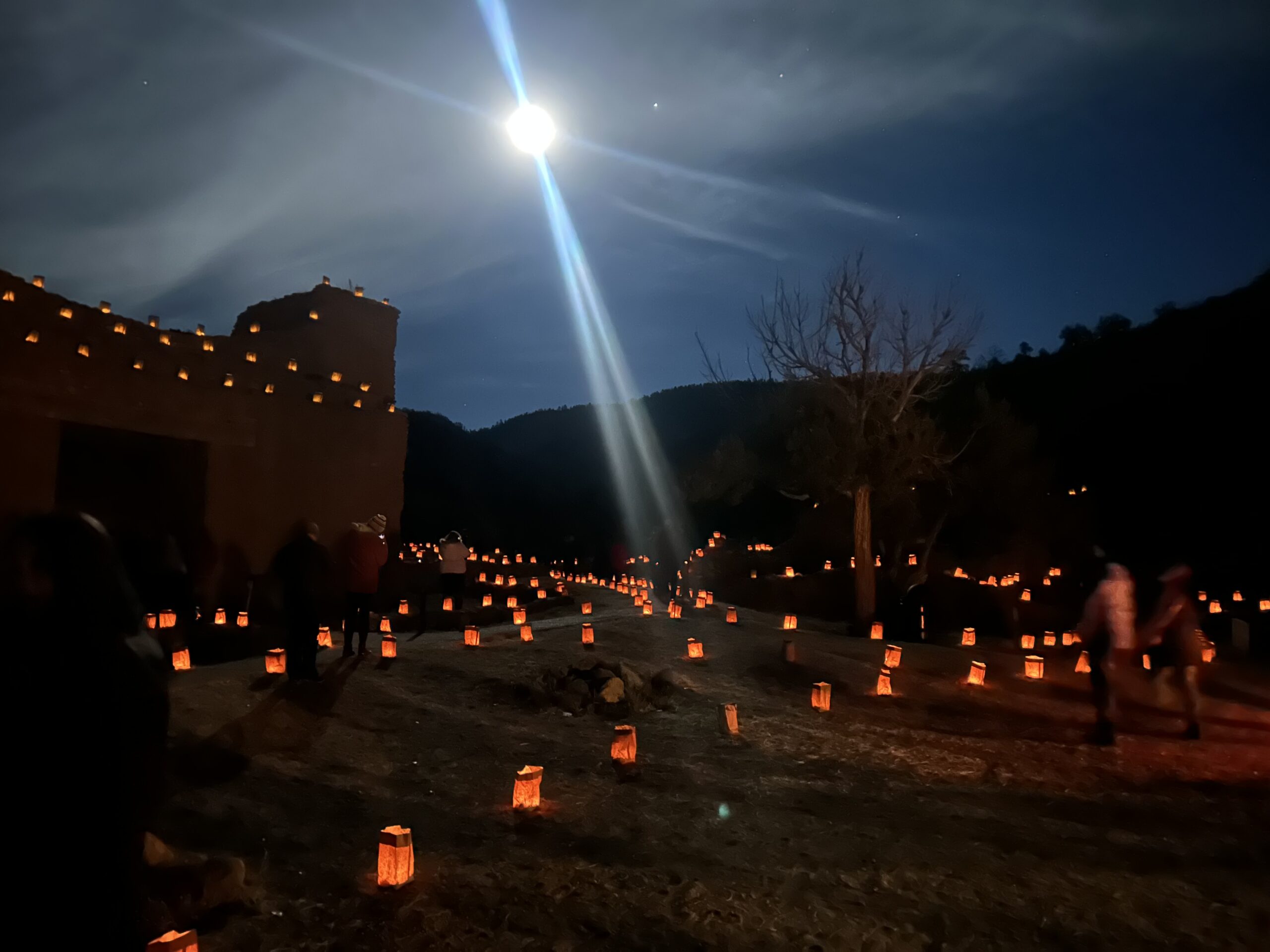
Finding Joy in the Darkness
I would like to take a moment of personal privilege to say Happy Birthday to all December birthday babies! Being a December birthday gal myself, I recognize that there is something beautifully poetic in celebrating a birthday during this time of year. As a child, this balance of beauty did not come easily for me to recognize, because you see not only do December Birthday’s compete for birthday-specific wrapping paper (please do not present a gift in Christmas wrapping paper to your December birthday friends!), birthday parties vs. holiday parties, and the many combined Merry Christmas/Happy Birthday greetings, but we also recognize the shared deep significance of this time of year.
As I have grown and matured, I have come to appreciate and embrace this season, specifically the time of the winter solstice, which takes place in a profound wonder amidst the levitating bliss of it all. The winter solstice – taking place on December 21st – marks the longest night of the year, a day when darkness seems to reign. It’s a time when many of us may feel the weight of long shadows, both in the natural world and in our own lives. For those carrying grief, loss, or burdens too heavy to name, the darkness can feel overwhelming. Yet, it is here, in this profound darkness, that the light of hope begins to shine.
The Gospel of John offers this assurance: “The light shines in the darkness, and the darkness did not overcome it” (John 1:5). This verse resonates deeply on nights like the winter solstice, when the darkness feels unyielding. It reminds us that light—even the smallest flicker—has the power to break through. The darkness cannot extinguish it.
The Longest Night Service – sometimes called a Blue Christmas Service which takes place on or around the Winter Solstice – is an acknowledgment of the tension that we live in a world that holds both darkness and light. This is not a service of easy answers or forced cheer. Instead, it is a sacred space to bring our whole selves before God—our grief, our doubts, our weariness—and to trust that even here, God meets us with compassion. These services tend to be truly authentic in recognizing that this season is not glitz and glam for all, rather this season may bring a time of tenderness, and with it, a sacred moment in time to acknowledge the darkness while kindling the light. It’s a reminder that God meets us in our honest cries.
John 1:5 anchors me in this season. It doesn’t promise the absence of darkness but declares the triumph of light. The Longest Night and Advent joy invites us to practice looking for glimmers of light in the most unexpected places. It could be in the laughter of a child, a phone call from a friend, or a moment of stillness in prayer. Often, it’s in these small moments that I rediscover the power of joy—not as fleeting happiness but as a gift rooted in hope.
As we move through this season, I’m holding onto the image of light piercing through the darkness. My prayer is that we all find joy in the small and large reminders of God’s unrelenting presence. Whether through a service like the Longest Night, a scripture like John 1:5, or a candle lit in anticipation, may we find the courage to celebrate joy—even, and especially, when the night feels longest.
As my December birthday arrives and we inch closer to Christmas, I’ll be reflecting on the gift of light—how it not only shines but transforms us, illuminating the path toward hope, peace, and joy.
Learn More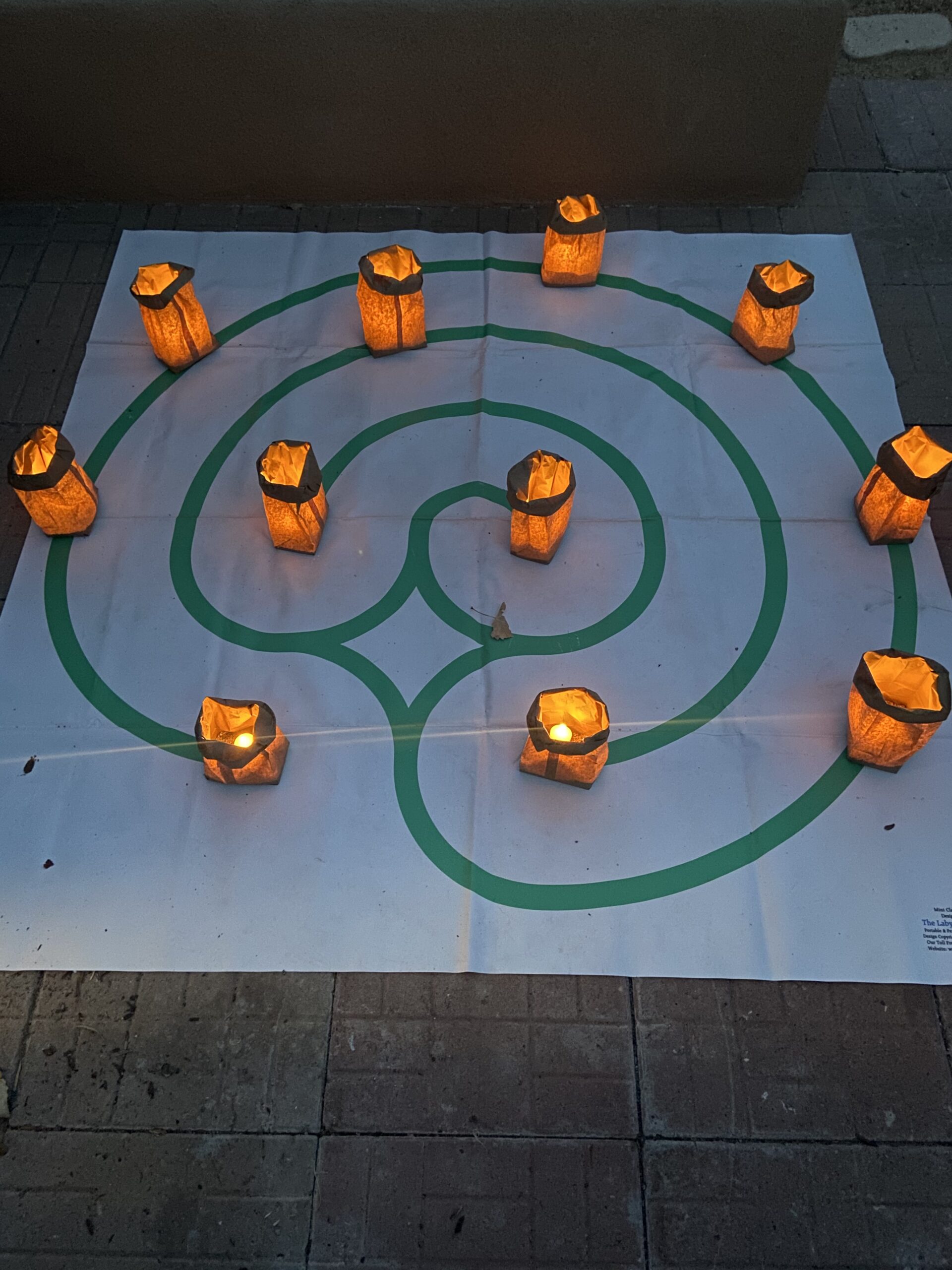
Ablation of the Soul: Creating Peace
Before worship began this morning, I found myself looking around the sanctuary and thinking, “There is just something about this time of year…” Maybe it’s the decorations – the Chrismon’s on the trees, the Advent Wreath, the nativity placed front and center, or the alter which seems to have been freshly poshed in a manner that is preparing for a special guest to arrive. Perhaps it’s the music this time of year, and the many known debates had behind the scenes of ‘What constitutes an Advent song exactly?” and “Can we please have some Christmas music before the 24th?” Perhaps it’s the reminder told through scripture of the story and the anticipation of the expectant birth of the Christ Child. Maybe, just maybe, it’s all of the above.
Worship this morning, made me pause and consider what the scripture reminder of Peace means in our world today. The concept of an ablation of the soul come to mind for me. An ablation is a surgical procedure used to remove or destroy tissue that causes harm. It is a precise, intentional act, one undertaken not to harm, but to heal. This concept has much to teach us about the journey toward inner healing and peace, a journey that often requires the ablation of the soul.
We carry within us emotional scars, fears, and burdens that weigh heavily on our spirits. Old wounds left unhealed and toxic narratives whispered by the world or even by our own insecurities have a way of lodging themselves deep within. These are the growths that hinder our ability to live fully, to love freely, and to find peace.
But what does it mean to undergo an ablation on the soul? It starts with honest introspection. Just as a surgeon uses scans and tests to locate the exact source of a physical issue, we must look inward, guided by prayer, reflection, and sometimes the wise counsel of others. Once identified, removing these spiritual obstacles often requires the delicate work of forgiveness—of others, and sometimes of ourselves. This forgiveness is not an act of condoning harm, but an intentional release of the grip pain has on our lives. It’s also about shedding harmful habits or beliefs that no longer serve us.
The process is not easy – recovery can be painful, even while it’s lifesaving. The spiritual work of ablation can feel daunting, as it often requires letting go of things we’ve clung to for far too long. As we take our time through this process – seeking support and care from those around us – we create space for something beautiful: Peace. This peace isn’t merely the absence of conflict but the presence of wholeness. It’s the kind of peace that allows us to sit with ourselves and others without resentment, to find joy even amidst life’s challenges, and to extend love generously.
The ablation of the soul isn’t a one-time event; it’s an ongoing process. Each layer of healing invites us into deeper peace and a fuller understanding of who we created to be.
So, let us embrace the work of creating peace—not just outwardly in the world, but inwardly within our own hearts.
May your journey toward peace be courageous, healing, and full of grace.
Learn More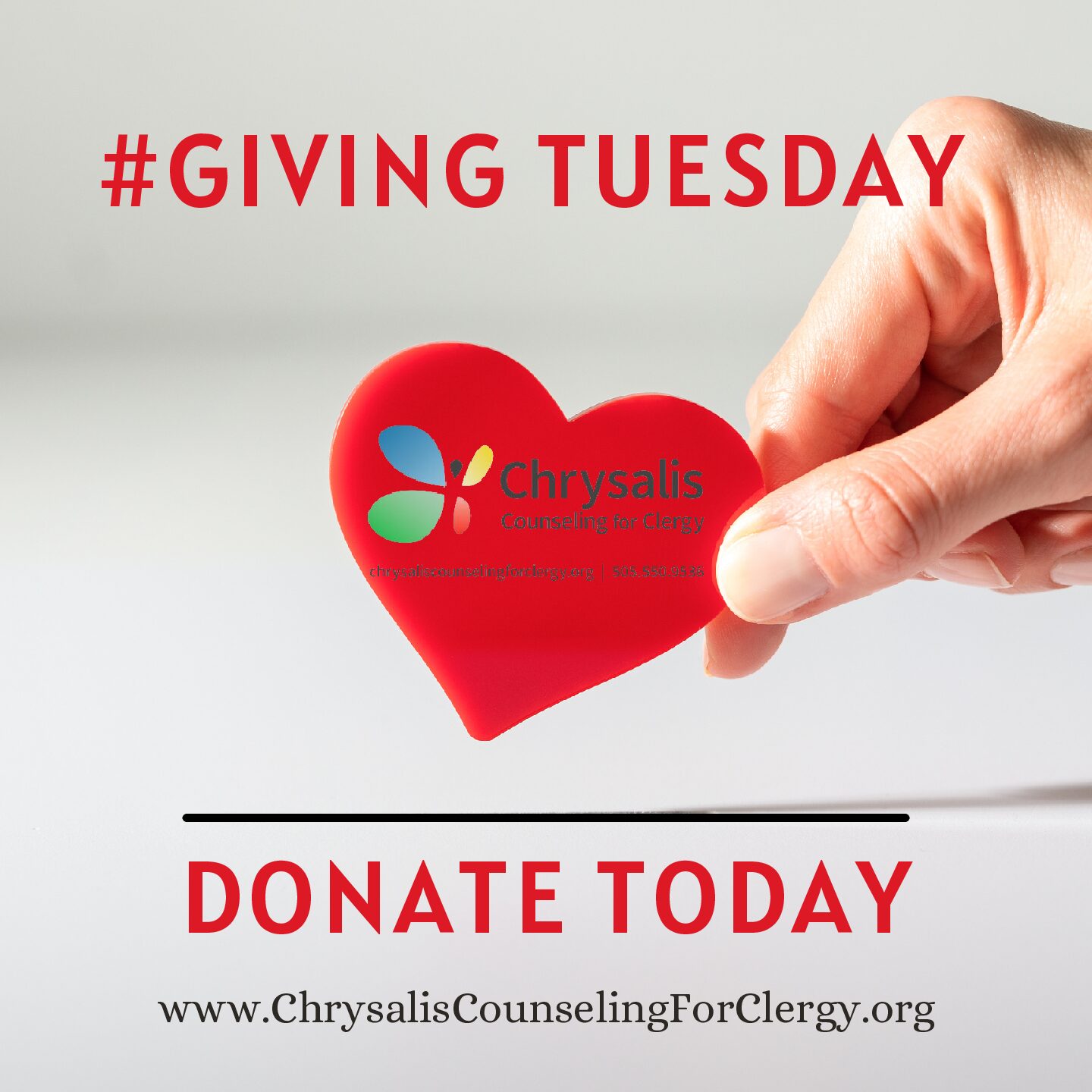
The Gift of Giving
#GivingTuesday Reflection
The season of Advent is here—a time when we light the first candle of the Advent wreath and lean into the promise of hope. This week, we are invited to reflect on the profound intersection of hope and generosity, especially as we participate in the upcoming celebration of #GivingTuesday.
Advent teaches us that hope is not passive. It is an active force, born out of faith in a brighter future. It’s the kind of hope that compels action, encouraging us to be part of God’s work in the world. When we give, we become bearers of hope for those in need—hope for healing, restoration, and new beginnings.
GivingTuesday provides a beautiful opportunity to embody this spirit. In a world where the headlines often tempt us toward despair, giving reminds us that we are not powerless. Whether we give our time, resources, or talents, we participate in the great story of hope that Advent proclaims.
Practical Ways to participate in #GivingTuesday This Week:
- Support the work of Chrysalis: Whether it’s a donation in a special clergy’s memory, a donation to support clergy who may not be able to cover retreat registration costs or the cost of telehealth, or it’s a donation to support the administrative work of this organization, your contributions makes a tangible difference.
Making a tax-deductible donation is easy: Follow the prompts on the website – Listed under the Solutions page/bottom of page (https://chrysaliscounselingforclergy.org) where you can pay directly with your credit card – and recurring if you wish – or, you are welcome to send a check in the mail if that is easier for you (808 Manzano St, NE Albuquerque, NM 87110). - Volunteer: Sometimes, the gift of presence is the most valuable. Volunteer at a community meal or visit someone who could use a companion.
- Acts of Kindness: Small gestures—a handwritten note, a cup of coffee for a coworker, or a prayer—can light a spark of hope in someone’s life.
This Advent, let us ask ourselves: How can my giving embody the hope Christ brings into the world? Let us take the light of that first candle and carry it into the lives of others, trusting that our acts of generosity, no matter how small, are sacred.
As we give, we remind ourselves and others of the truth that lies at the heart of this season: The light shines in the darkness, and the darkness cannot overcome it.
May our giving be a reflection of God’s abundant love, and may it kindle hope in every heart!
A Prayer for Hopeful Giving
God of Hope,
You are the Giver of all good gifts.
As we enter this sacred season of waiting,
Teach us to be generous with what we have and who we are.
May our giving reflect your light and love,
Bringing hope to the weary and joy to the sorrowful.
In the name of Christ, our Living Hope, we pray. Amen.
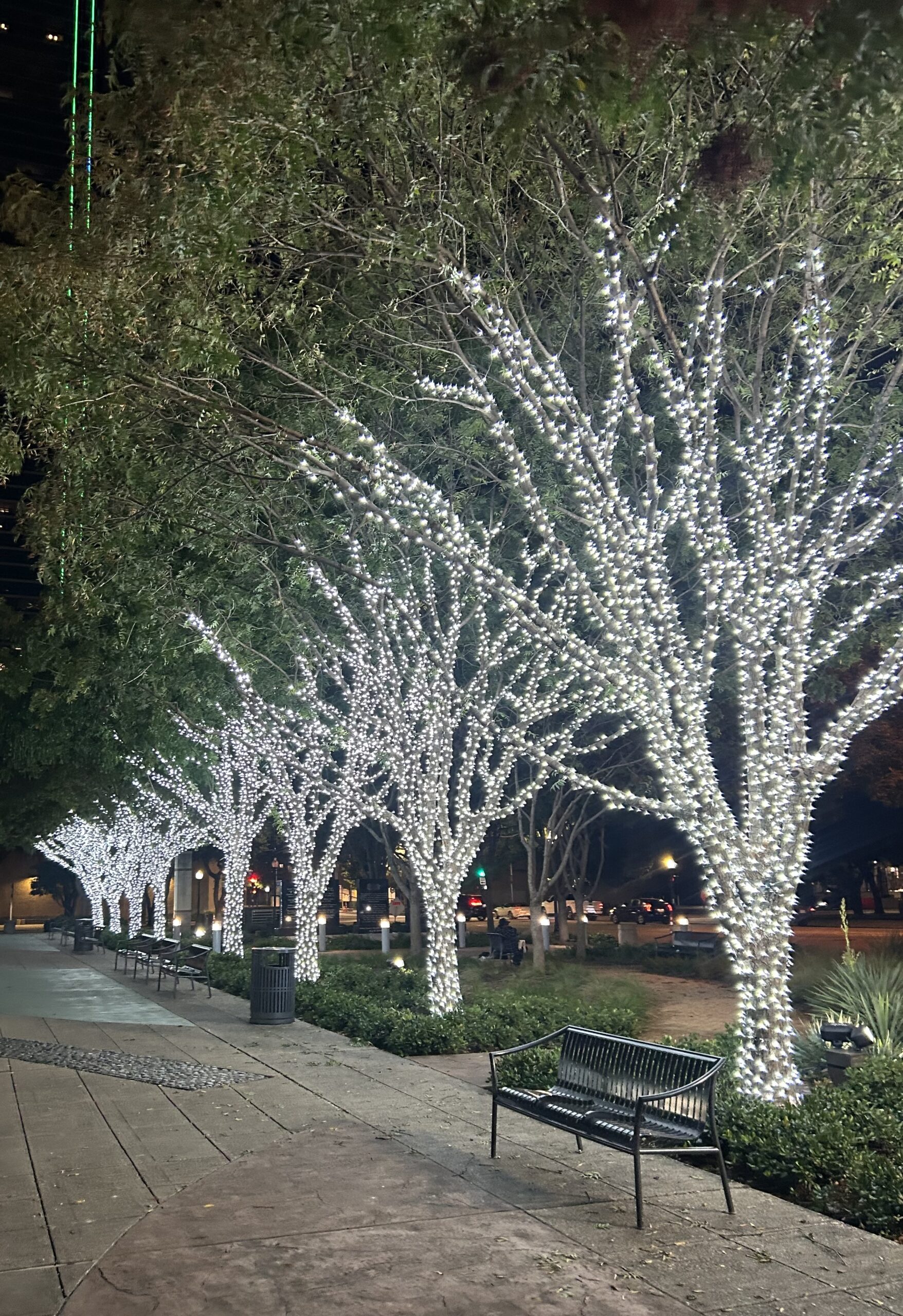
Keeping True to Self: Being Intentional During the Holiday Season
So often during the holiday season, I find myself so lost in the call to be with others and to fill their cup, that I forget to find space and time to fill mine. The holiday season is a time filled with joy, traditions, and celebrations—but it can also bring an overwhelming sense of busyness, financial strain, and pressure to meet expectations. Amid the whirlwind of events, gift-giving, and decorating, it’s easy to lose sight of what matters most.
How do we stay true to ourselves and our values during this bustling time of year?
The answer lies in intentionality—aligning our actions with our deepest values and beliefs. By taking time to reflect and make conscious choices, we can transform the holidays into a season of authenticity and peace.
1. Know Your Values
Take a moment to reflect on what you truly cherish about this season. Is it time with loved ones, acts of generosity, or moments of spiritual renewal? Write down your top three priorities. Knowing your values will act as a compass, guiding how you spend your time and resources.
2. Spend Your Time Wisely
Time is one of the most valuable gifts we have. Ask yourself:
- Does this activity or commitment align with my values?
- Am I saying “yes” because I truly want to or out of obligation?
Consider setting aside dedicated time for what nourishes your soul—whether it’s baking cookies with your family, volunteering for a cause, or attending a candlelight service.
3. Mindful Spending
The pressure to buy expensive gifts or over-decorate can create financial stress. Instead, focus on giving in ways that align with your values:
- Experience gifts: Give the gift of time, such as a planned outing or shared activity.
- Homemade gifts: Create something personal, like baked goods, crafts, or a handwritten note.
- Charitable giving: Honor someone by donating to a cause close to their heart.
4. Set Boundaries
It’s okay to say no to things that don’t serve you. Decline invitations if they overextend you, and don’t feel pressured to spend beyond your means. A kind but firm “I appreciate the invitation, but I can’t commit to that this year” is all it takes.
5. Create Intentional Traditions
Rather than falling into the trap of “we’ve always done it this way,” ask yourself if each tradition brings you joy or meaning. If not, consider starting a new tradition that reflects your current values and stage of life.
6. Pause and Reflect
Amid the hustle, carve out quiet moments to reflect on the true meaning of the season. Whether it’s through prayer, meditation, journaling, or simply sipping hot cocoa in silence, these moments of stillness can ground you.
Hear This – The holidays are not about perfection; they’re about connection—connecting with your values, your loved ones, and your faith. When we live intentionally, we experience a season that truly reflects who we are.
This year, give yourself the gift of presence, authenticity, and peace. Let your holidays be a celebration of what matters most!
Learn More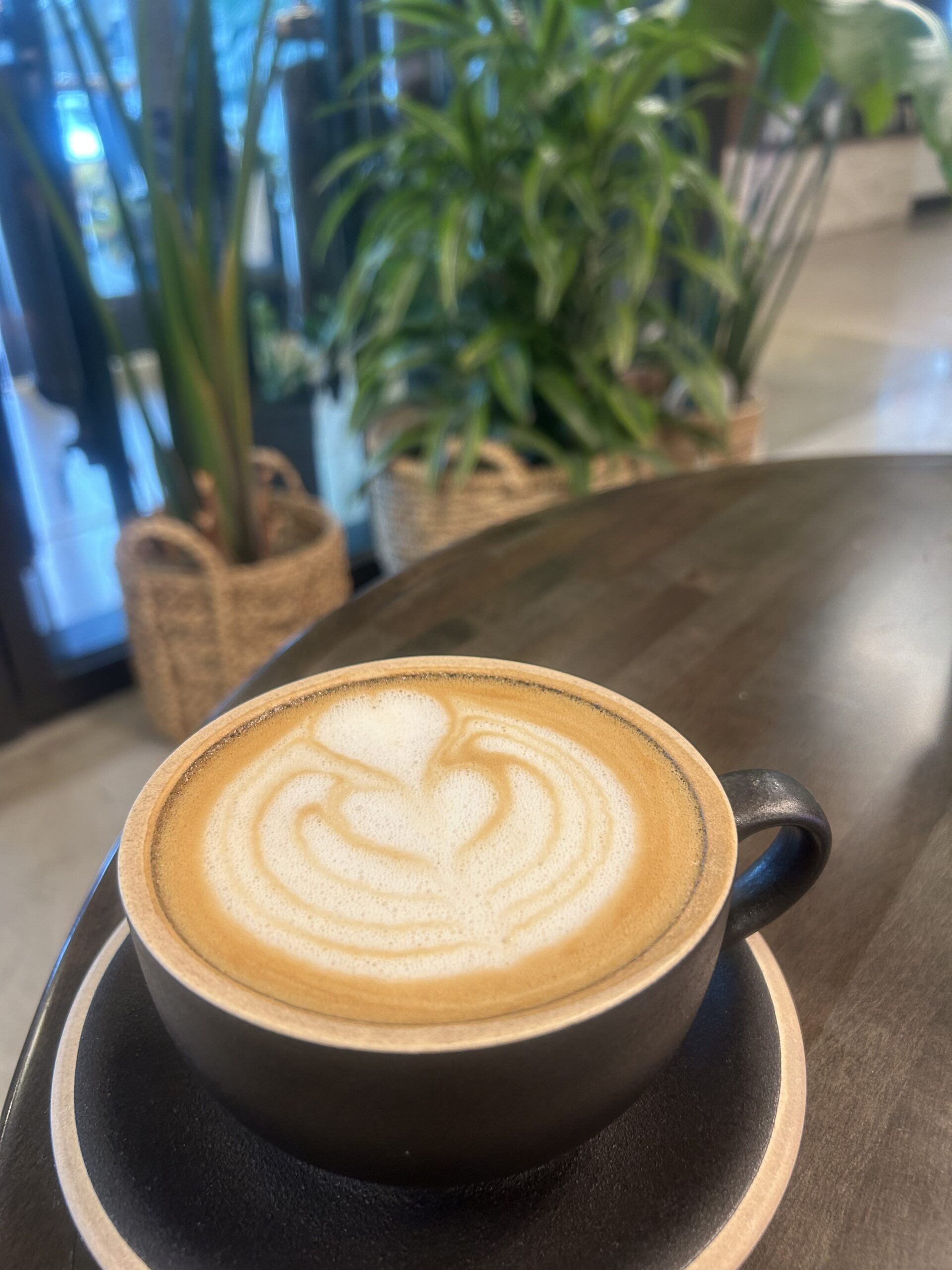
Do you have 8 Minutes to Spare?
Recently, a friend shared a YouTube video featuring leadership speaker and author, Simon Sinek. The topic was about being present and aware in your relationships with others, and he focused on the concept of Eight Minutes.
The concept is simple: Eight Minutes may not seem like a lot of time, but based on research, it’s long enough to give someone your full attention, to listen with an open heart, and to offer words of encouragement. It’s short enough to fit into even the busiest of schedules, yet meaningful enough to create a lasting impact.
The idea for this practice was sparked by reflecting on moments of unexpected connection. I think of those times when a brief encounter—a quick coffee break, a passing chat in the hallway—turns into a memorable exchange. These are the small moments when we realize that deep connection doesn’t always require a deep dive; sometimes it’s just about showing up, even if only for a few minutes.
The reality is, we have the ability to create powerful moments of connection in our lives. It begins with a simple question: Do I have 8 minutes to spare?
How to Practice 8 Minutes:
- Set the Intention: Choose someone you’ve been meaning to connect with. It could be a friend, a family member, or a church member you haven’t seen in a while. Set aside 8 minutes, either in person, on the phone, or through a video call.
- Be Present: For these 8 minutes, give the person your full attention. Put away distractions and listen deeply. Ask how they are, and really listen to the answer. Sometimes people just need a space to share what’s on their hearts.
- Offer Encouragement: Use this time to offer a word of kindness or encouragement. Share a scripture that’s been meaningful to you recently or simply express gratitude for the person’s presence in your life.
- Pray Together: If you feel comfortable, offer a brief prayer. It doesn’t have to be long or elaborate; a simple prayer for peace, strength, or gratitude can be a powerful way to close your time together.
The beauty of 8 Minutes is in its simplicity. It’s a reminder that we don’t need to wait for perfect circumstances or large chunks of time to make meaningful connections. We can create moments of grace in our everyday lives, in just 8 minutes.
So, I challenge you this week—reach out to someone. Ask them, Do you have 8 minutes to spare? You may be surprised at how much can change in that short span. A little time can go a long way when it’s filled with intention, love, and the desire to connect.
In a world where we often feel we’re too busy to catch up, let’s reclaim the power of 8 minutes.
Learn More

